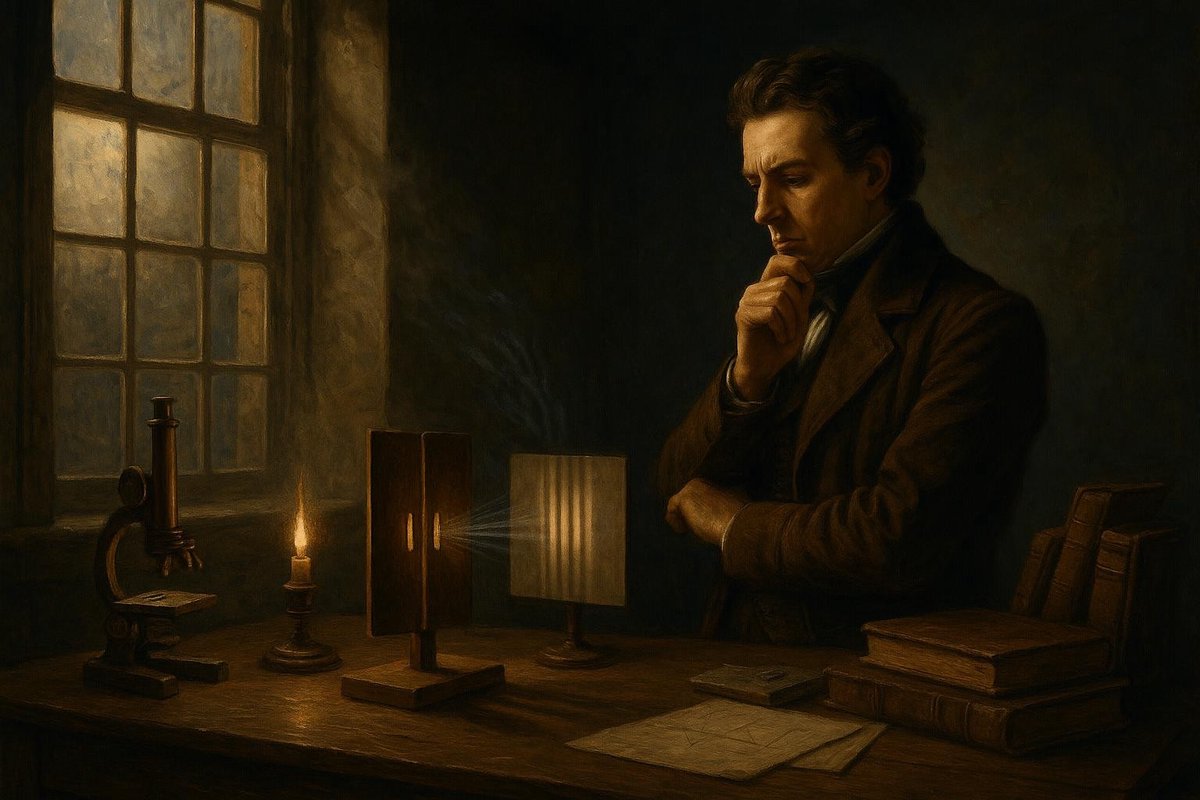
The Double-Slit Experiment: A Window into Nature’s Dualities
In the realm of physics, few experiments have perplexed and fascinated as much as the double-slit experiment. This simple yet profound setup invites us to question not only the nature of light but also the very nature of our understanding. As beams of light or particles pass through two slits, they produce patterns that defy classical logic, displaying both wave-like and particle-like characteristics. Could this dual behavior reflect a deeper truth about human perception and cognition?
Hypothesis & Context
Before the double-slit experiment, light was primarily understood through the lens of Isaac Newton’s corpuscular theory, which viewed light as a stream of particles. However, many scientists, including Thomas Young, believed in the wave theory. The double-slit experiment emerged as a battleground for these conflicting ideas.
- Light behaves as a particle: a straightforward assumption supported by Newton.
- Light exhibits wave-like interference patterns: Young’s hypothesis.
Interestingly, this experiment not only challenged the physical theories of the time but also reflected the dual nature of human understanding. Are we not, in many ways, both rational and emotional beings, with thoughts that sometimes behave more like waves and at other times like particles?
Setup & Method
Imagine a beam of light or electrons directed at an opaque barrier with two closely spaced slits, beyond which lies a detection screen. As particles pass through, they create an unexpected interference pattern, akin to ripples overlapping in a pond.
- Light source emits particles/electrons towards a barrier with two slits.
- Interference pattern emerges on the detection screen.
This setup defied expectations. When observed, particles behaved predictably; unobserved, they dabbled in possibilities, hinting at a deeper mystery. Does the act of observation itself alter the reality? This question resonates with how human perception can shape experiences, and how attention alters outcomes.
Results & Reactions
The results were nothing short of revolutionary. Observed particles passed through a single slit like soldiers in line. Yet when left unobserved, they danced in a complex interference pattern.
- Observed: Particles follow a single path.
- Unobserved: They form interference patterns, suggesting wave behavior.
This duality sparked heated debates. Niels Bohr and Albert Einstein frequently exchanged ideas about the implications for quantum mechanics. Bohr famously said, “Everything we call real is made of things that cannot be regarded as real.” This statement invites reflection on how fleeting and fluid our own perceptions can be.
Implications
What does this tell us about the universe? The duality of particles reflects back at us, much like a mirror. Are humans not similarly dual in nature—wavering between rationality and emotion?
- Wave-particle duality: Mirrors human cognitive duality.
- Observation effect: Parallels the role of attention in shaping reality.
This experiment nudged physics into the quantum age, demanding that we reconsider long-held truths. The blurred lines between observer and observed in physics echo the emotional and rational complexities of human life. As Bohr pondered, reality itself might be more about the interplay of forces rather than static truths.
In conclusion, the double-slit experiment serves as a poignant metaphor for our own dual natures. We are particles of humanity, weaving intricate patterns through the fabric of our own consciousness.
Fuel Someone Else’s Curiosity
As you ponder these insights, consider sharing this knowledge. Ignite curiosity in others and let them explore the intersections of light, particles, and human understanding. By spreading ideas, you become part of the vast, interconnected web of inquiry that defines our world. Feel free to discuss and share your thoughts on this topic with others, for it is through dialogue that understanding deepens.

Leave a Reply